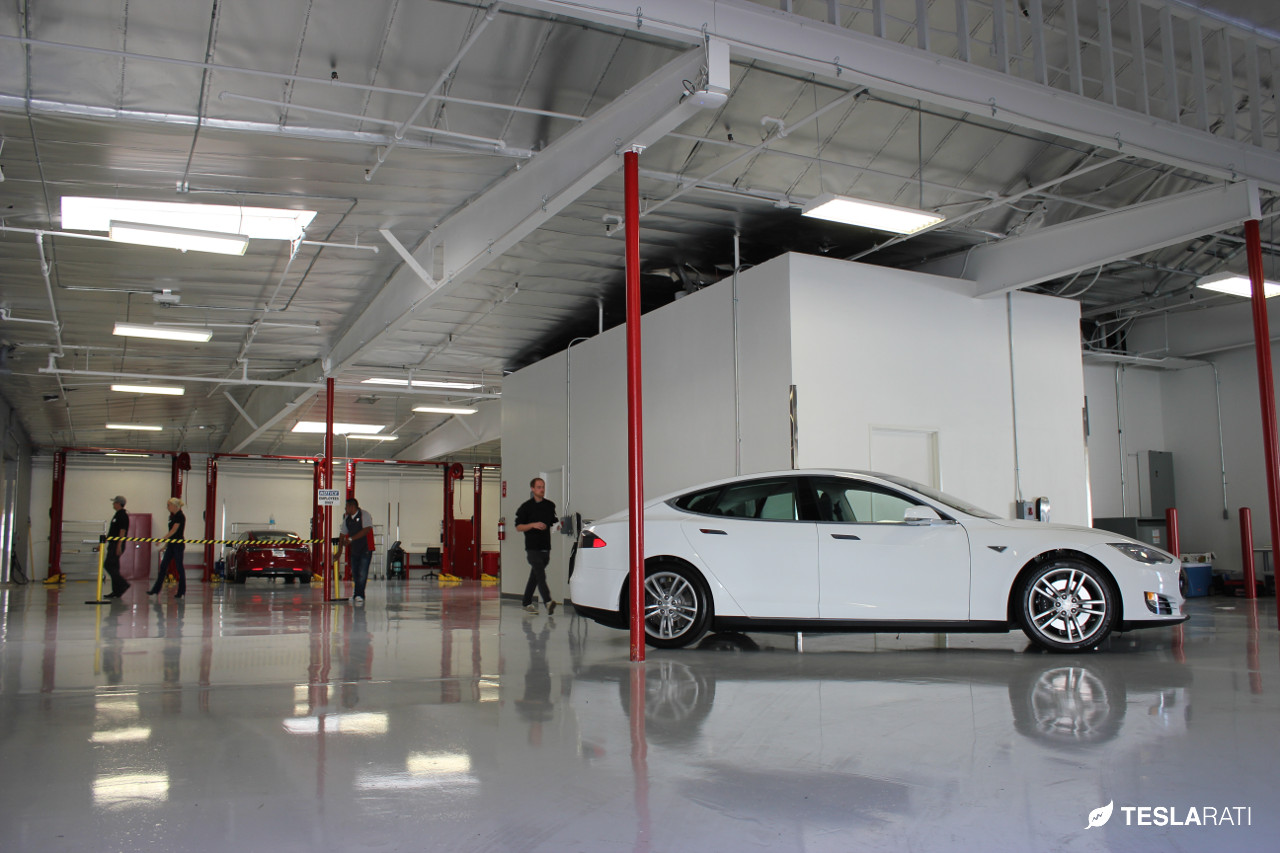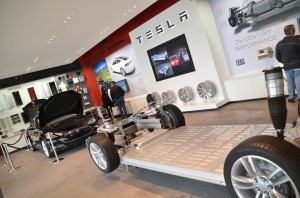News
Is Tesla Motors disruptive or disturbing?

 Tesla Motors stands out in many ways, leaving many wondering how disruptive is it and how disturbing it is for corporations. One thing is for certain, Tesla reflects a need in society, that of a deep fundamental change. The problem is, are giant corporations ready for this change and can they adapt?
Tesla Motors stands out in many ways, leaving many wondering how disruptive is it and how disturbing it is for corporations. One thing is for certain, Tesla reflects a need in society, that of a deep fundamental change. The problem is, are giant corporations ready for this change and can they adapt?
To disrupt, or not, that is not longer the questions.
Tesla Motors disrupts and irritates the way corporations operate. Elon Musk and Martin Eberhard didn’t invent the wheel, they both used what entrepreneurs are best at, that of asking what is needed. They wanted a cool and fun car that didn’t use dirty polluting petroleum. They went to see what AC Propulsion was working on with their incredible t-zero, the grandfather of the Roadster and the Tesla Roadster born soon after.
Tesla Motors didn’t reinvent the wheel, but disrupted the automotive world by using old and tested technologies, an electric motor and off the shelf batteries. On the flip side, automakers build vehicles with planned obsolescence and constant maintenance, which perpetuate a thriving cash flow through after market and distribution. Tesla introduced an electric car that required close to no maintenance, sold directly to buyers who choose to buy it or not. That was the disruptive part, now let’s look at the disturbing part for automakers.
Steady as she goes down the drain.
We often fault carmakers for everything wrong in the automotive industry, but their worn out business model that won’t adapt to our fast changing needs is really what is wrong. The biggest mistake they made was to over-rely on the market it created in the first place. It simply didn’t see the electric car technology progressing faster than their gasoline one and doubted this new market was ready. They simply didn’t understand people want a real fundamental change, which means taking a step back from bottom line profits.
The Tesla Motors business model frightens established companies because it operates outside their reality and shifts the emphasis back to the consumer. We can debate how much hype there is around a Roadster and a Model S, but fundamentally, one either buys cars because of its superior performance over a gasoline car, or because of the freedom of energy use, with its convenience and reliability and finally, or because it just darn changes things a lot.
Now flash back to the post 2008 era, when the financial world was partying as if there were no tomorrow and carmakers sued any states imposing better fuel economy. Carmakers perpetuated the belief we wanted cars with more cup holders than we truly needed, and favored creature comforts over performance and evolution. The advent of the electric wrestled that grip on the lulled market away from them, the way only a silicon valley startup could with its different business model.
Who’s disturbing now?
So, who’s disturbing now? When we look back in time, almost all big corporations were at one point disruptive. AT&T gave us Unix, Microsoft gave us the potential of the personal computer, but we certainly can’t call them disruptive anymore. They are disturbing in the fact they no longer innovate, but stubbornly pursue a path of pure profitability. Unfortunately, Apple is also following the same trend. The company once famous for stellar customer service and extremely well made computers is now more focused on profits than innovations. It’s Apple store is no longer fun to visit, and manufacturing problems are happening often.
It doesn’t take much extrapolation to see that one day too, Tesla Motors will be in the same situation. Are there exceptions? Certainly IBM made the right change. After decades of focusing on manufacturing, it made the boldest move to go back to consulting. Look at where IBM is now, and compare it to other personal computer makers. So what can companies learn from newer players and what can newer players learn from older companies having come full circle?

News
Tesla FSD v14.2.2 is getting rave reviews from drivers
So far, early testers have reported buttery-smooth drives with confident performance, even at night or on twisty roads.

Tesla Full Self-Driving (Supervised) v14.2.2 is receiving positive reviews from owners, with several drivers praising the build’s lack of hesitation during lane changes and its smoother decision-making, among others.
The update, which started rolling out on Monday, also adds features like dynamic arrival pin adjustment. So far, early testers have reported buttery-smooth drives with confident performance, even at night or on twisty roads.
Owners highlight major improvements
Longtime Tesla owner and FSD user @BLKMDL3 shared a detailed 10-hour impression of FSD v14.2.2, noting that the system exhibited “zero lane change hesitation” and “extremely refined” lane choices. He praised Mad Max mode’s performance, stellar parking in locations including ticket dispensers, and impressive canyon runs even in dark conditions.
Fellow FSD user Dan Burkland reported an hour of FSD v14.2.2’s nighttime driving with “zero hesitations” and “buttery smooth” confidence reminiscent of Robotaxi rides in areas such as Austin, Texas. Veteran FSD user Whole Mars Catalog also demonstrated voice navigation via Grok, while Tesla owner Devin Olsen completed a nearly two-hour drive with FSD v14.2.2 in heavy traffic and rain with strong performance.
Closer to unsupervised
FSD has been receiving rave reviews, even from Tesla’s competitors. Xpeng CEO He Xiaopeng, for one, offered fresh praise for FSD v14.2 after visiting Silicon Valley. Following extended test drives of Tesla vehicles running the latest FSD software, He stated that the system has made major strides, reinforcing his view that Tesla’s approach to autonomy is indeed the proper path towards autonomy.
According to He, Tesla’s FSD has evolved from a smooth Level 2 advanced driver assistance system into what he described as a “near-Level 4” experience in terms of capabilities. While acknowledging that areas of improvement are still present, the Xpeng CEO stated that FSD’s current iteration significantly surpasses last year’s capabilities. He also reiterated his belief that Tesla’s strategy of using the same autonomous software and hardware architecture across private vehicles and robotaxis is the right long-term approach, as it would allow users to bypass intermediate autonomy stages and move closer to Level 4 functionality.
News
Elon Musk’s Grok AI to be used in U.S. War Department’s bespoke AI platform
The partnership aims to provide advanced capabilities to 3 million military and civilian personnel.

The U.S. Department of War announced Monday an agreement with Elon Musk’s xAI to embed the company’s frontier artificial intelligence systems, powered by the Grok family of models, into the department’s bespoke AI platform GenAI.mil.
The partnership aims to provide advanced capabilities to 3 million military and civilian personnel, with initial deployment targeted for early 2026 at Impact Level 5 (IL5) for secure handling of Controlled Unclassified Information.
xAI Integration
As noted by the War Department’s press release, GenAI.mil, its bespoke AI platform, will gain xAI for the Government’s suite of tools, which enable real-time global insights from the X platform for “decisive information advantage.” The rollout builds on xAI’s July launch of products for U.S. government customers, including federal, state, local, and national security use cases.
“Targeted for initial deployment in early 2026, this integration will allow all military and civilian personnel to use xAI’s capabilities at Impact Level 5 (IL5), enabling the secure handling of Controlled Unclassified Information (CUI) in daily workflows. Users will also gain access to real‑time global insights from the X platform, providing War Department personnel with a decisive information advantage,” the Department of War wrote in a press release.
Strategic advantages
The deal marks another step in the Department of War’s efforts to use cutting-edge AI in its operations. xAI, for its part, highlighted that its tools can support administrative tasks at the federal, state and local levels, as well as “critical mission use cases” at the front line of military operations.
“The War Department will continue scaling an AI ecosystem built for speed, security, and decision superiority. Newly IL5-certified capabilities will empower every aspect of the Department’s workforce, turning AI into a daily operational asset. This announcement marks another milestone in America’s AI revolution, and the War Department is driving that momentum forward,” the War Department noted.
News
Tesla FSD (Supervised) v14.2.2 starts rolling out
The update focuses on smoother real-world performance, better obstacle awareness, and precise end-of-trip routing, among other improvements.

Tesla has started rolling out Full Self-Driving (Supervised) v14.2.2, bringing further refinements to its most advanced driver-assist system. The new FSD update focuses on smoother real-world performance, better obstacle awareness, and precise end-of-trip routing, among other improvements.
Key FSD v14.2.2 improvements
As noted by Not a Tesla App, FSD v14.2.2 upgrades the vision encoder neural network with higher resolution features, enhancing detection of emergency vehicles, road obstacles, and human gestures. New Arrival Options let users select preferred drop-off styles, such as Parking Lot, Street, Driveway, Parking Garage, or Curbside, with the navigation pin automatically adjusting to the user’s ideal spot for precision.
Other additions include pulling over for emergency vehicles, real-time vision-based detours for blocked roads, improved gate and debris handling, and extreme Speed Profiles for customized driving styles. Reliability gains cover fault recovery, residue alerts on the windshield, and automatic narrow-field camera washing for new 2026 Model Y units.
FSD v14.2.2 also boosts unprotected turns, lane changes, cut-ins, and school bus scenarios, among other things. Tesla also noted that users’ FSD statistics will be saved under Controls > Autopilot, which should help drivers easily view how much they are using FSD in their daily drives.
Key FSD v14.2.2 release notes
Full Self-Driving (Supervised) v14.2.2 includes:
- Upgraded the neural network vision encoder, leveraging higher resolution features to further improve scenarios like handling emergency vehicles, obstacles on the road, and human gestures.
- Added Arrival Options for you to select where FSD should park: in a Parking Lot, on the Street, in a Driveway, in a Parking Garage, or at the Curbside.
- Added handling to pull over or yield for emergency vehicles (e.g. police cars, fire trucks, ambulances).
- Added navigation and routing into the vision-based neural network for real-time handling of blocked roads and detours.
- Added additional Speed Profile to further customize driving style preference.
- Improved handling for static and dynamic gates.
- Improved offsetting for road debris (e.g. tires, tree branches, boxes).
- Improve handling of several scenarios, including unprotected turns, lane changes, vehicle cut-ins, and school buses.
- Improved FSD’s ability to manage system faults and recover smoothly from degraded operation for enhanced reliability.
- Added alerting for residue build-up on interior windshield that may impact front camera visibility. If affected, visit Service for cleaning!
- Added automatic narrow field washing to provide rapid and efficient front camera self-cleaning, and optimize aerodynamics wash at higher vehicle speed.
- Camera visibility can lead to increased attention monitoring sensitivity.
Upcoming Improvements:
- Overall smoothness and sentience.
- Parking spot selection and parking quality.








